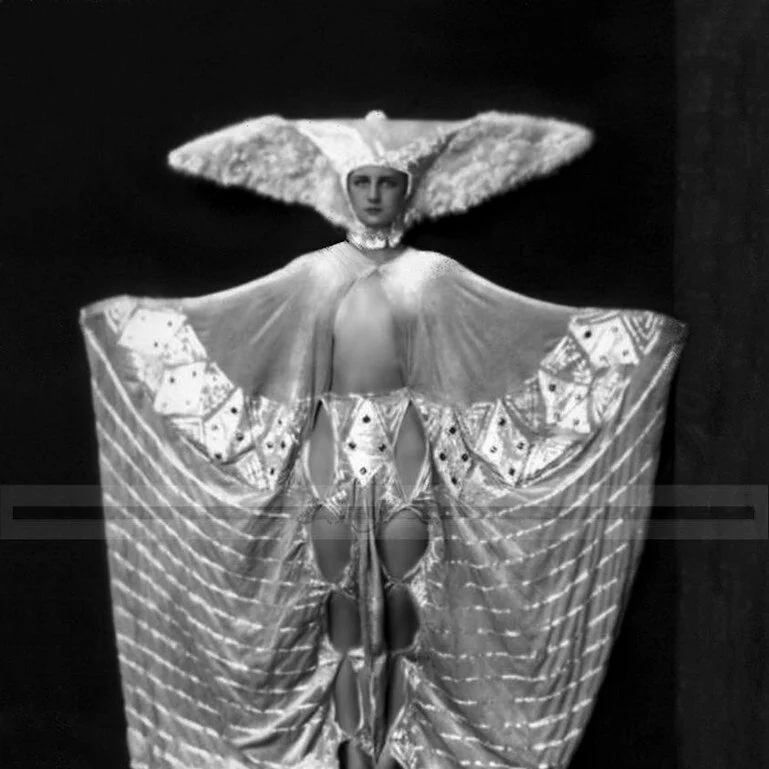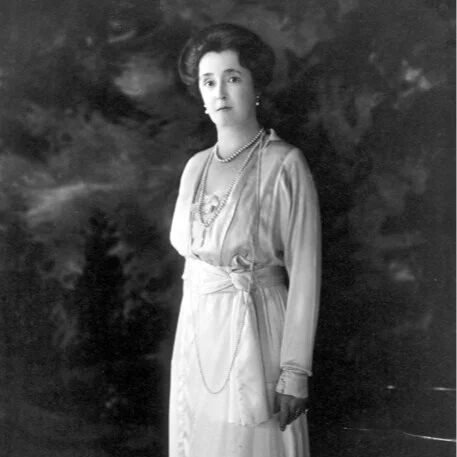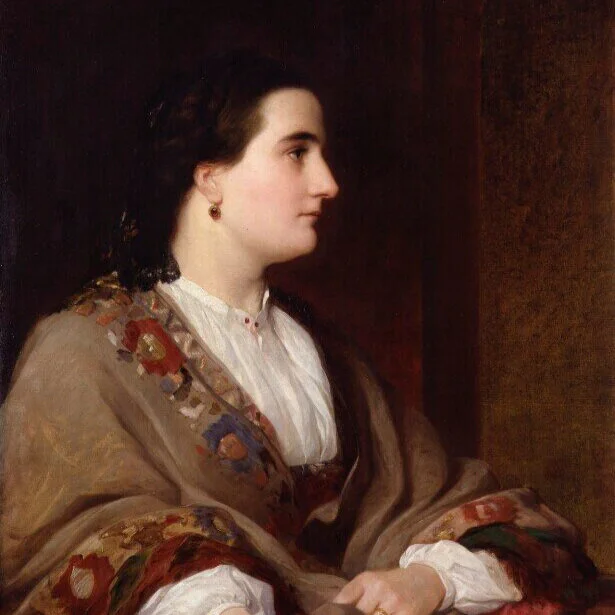Ziegfeld and Lady Duff Gordon
In 1915 Ziegfeld entered LDG’s life at a time when she was particularly vulnerable. Success had removed most checks on her narcissistic tendencies and she was blind to the fact that the world around her was changing. Lucy left Europe before comprehending the extent of the damage WWI had done— it had literally obliterated the world she knew— and she ran to the USA where a small coterie of well connected theater women (J.P. Morgan’s daughter and the wife of a Vanderbilt) ensured that new money flocked to her New York boutique.
LDG’s habit of keeping a pack of young men around her, “boys” increasingly drawn from NYC’s immigrant demimonde, became obnoxious to Sir Cosmo and he chose to manage her from Scotland. She drew new business partners from NYC too— clothes manufacturer John Lang Schuloff in particular threatened Cosmo’s financial control. In 1917, after protracted legal battles and numerous poor business decisions by LDG behind Cosmo’s back, Schuloff eventually gained control of her contract; her name; and her clothing business in the USA and Paris. The London boutique was “allowed” to continue using the Lucile name, but went under a few years later.
The Ziegfeld Follies partnership, however, began in 1915 at the start of LDG’s decline, when it was not obvious that her down-market slide would be the end of her business. As LDG shed the “oriental” designs that had made her popular in Europe, she sought French Empire fashion to win the hearts of American actresses:
Lucy’s list of clients read like a combination of the Social Register , a silent film set and Broadway. The Dolly sisters dressed identically in lace crinolines, Irene Castle in drifts of chiffon and pailettes, Isadora Duncan in Greek draperies, Normal Talmadge in ruffled net. Vanderbilts and Astors jostled Lily Langtry and Fanny Brice in the elegant fitting rooms.
Mary Pickford, just starting her long career in films, was employed by Lucy for the then enormous sum of one thousand dollars to advertise a Lucile dress— encouraged by her venal mother. But as she grew more successful Mary too became a paying client and, when she went on a bond-selling tour of America late in 1917, wore a specially-tailored khaki uniform designed for her by Lucy.
Not content with her continuing success as a couturière, Lucy launched herself into a secondary career as a fashion journalist— however, she wrote only of her own collections. Most of these articles appeared in Harper’s Bazaar, owned by William Randolph Hearst.
Mary Pickford’s early years in LDG creations coincided with Pickford’s contract negotiations with Monroe-native John R Freuler and Benjamin Hampton, who was William Wesley Young’s boss at Hampton’s Magazine, a NYC theater rag. Early on in his career, William Wesley Young served as editor for a few of Hearst’s papers in Chicago and New York City.
In keeping with the support of her theatrical clients and promoters, LDG began to hold fashion shows in theaters— you guessed it— she staged a series of tableaux vivants collectively titled “Fleurette’s Dream at Peronné” which glamorized a fictional French girl’s (Fleurette’s) WWI experiences. Part of the proceeds went to her sister (now a war correspondent) Elinor Glyn’s Paris charity “Secours Franco-American” and LDG made good use of her sexy “mannequins” to sell tickets:
The tableaux starred the statuesque Dolores and were presented at the Little Theater. Billie Burke, then married to Florenz Ziegfeld, was a customer and brought her husband to one of the matinees. So impressed was Ziegfeld that he asked Lucy whether he could employ Dolores (dressed, naturally, by Lucile) and several other mannequins in his current Follies. “But they do not know how to sing or dance, let alone talk,” Lucy is reputed to have said. Ziegfeld assured her that all they would have to do would be to walk around and carry her beautiful costumes, just as they had done in Peronné.
Thus was born a great American tradition: The Showgirl… So successful was this innovation that Lucy designed the Follies costumes until 1920. She created siren gowns, Egyptian costumes (for a Cleopatra scene), Chu Chin Chow Chinese costumes; she dressed showgirls as bouquets of flowers, as nautch girls.
The significance of “Egyptian”, “Oriental” and “siren” costumes I’ve detailed elsewhere, “nautch” girls were Indian dancing women/female children who were often from castes which included hereditary prostitute families. As her association with the Follies continued, Vogue reported that an “extraordinary number of men” were present at her fashion shows. There was a problem, though. While ostrich feathers and see-through kimonos might do it for the “tired businessmen” who patronized the Follies, the rest of the world was changing:
Lucy’s dresses had been designed to complement the soft chiaroscuro of the Edwardian boudoir; the grandeur of a Belle Epoque Ballroom; the exaggeration of the music hall stage. They could not withstand the harsher, plainer ambience of the cocktail bar and the nightclub.
The LDG of Ziegfeld was the LDG of decline, though historians of the Follies shy away from recognizing this. As a pictorial representation of LDG’s NYC development, here are images from each of her seasons costuming Flo’s leading showgirls. Edith May would have enjoyed the last year of LDG’s association with Ziegfeld, the year of Ziegfeld Girl Fanny Brice’s solo “glorification”.
1915 Mae Murray
Mae Murray in 1915, courtesy of 11East14thStreet.
1916 Ina Claire, Marion Davies
Ina Claire in 1916, from a publication called “Green Book”.
Marion Davies in 1916 with the Follies.
1917 Fannie Brice, Lilyan Tashman, Dolores, Peggy Hopkins
Cover image of Fanny Brice in 1917.
Lilyan Tashman in 1917 Follies.
“Dolores” in 1917 by Alfred Cheney Johnston. Dolores was originally discovered by LDG and hired be a high-fashion mannequin, she was later taken on by Ziegfeld. Image courtesy of Worthpoint.
Peggy Hopkins in 1917, probably taken by Alfred Cheney Johnston. Image courtesy of Broadway Photographs.
1918 Marilyn Miller, Dolores
Another Alfred Cheney Johnston image of “Dolores”, from 1917-1919.
Marilyn Miller in an 1918 publicity photo reproduced in an unknown magazine, probably “Cosmopolitan”. Silence Is Platinum
1919 Marilyn Miller
Marilyn Miller, date unknown, but wearing what I suspect is an LDG creation . Silence Is Platinum
1920 Fanny Brice
Fanny Brice by Alfred Cheney Johnston, dating from around the time she lead the Follies.
Quotations in this post are from “The It Girls” by Meredith Etherington-Smith and Jeremy Pilcher.

















